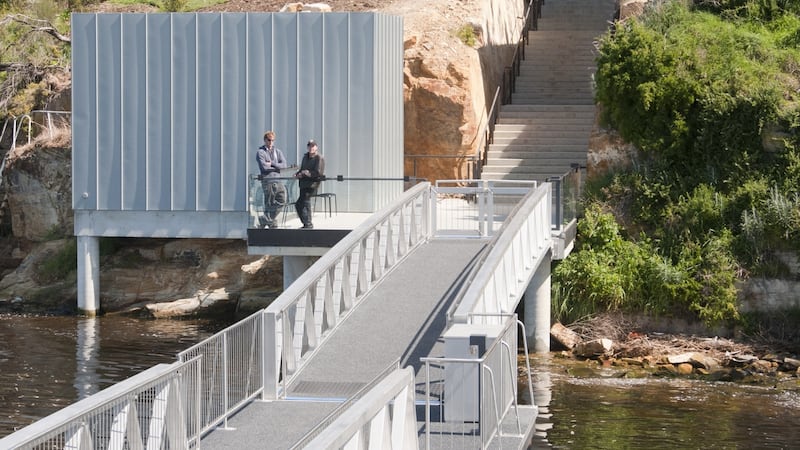Artists and writers have long had a habit of disappearing to an island off Australia’s southern coast attracted by its wild natural beauty and English-like countryside. Some 240km from the southeast tip of the mainland, Tasmania was settled as a British prison colony in 1803. Soon after, British creative types started to arrive on its shores.
Landscape painter John Glover was one of many artists who in the 1830s did "a disappearing act" to Tasmania, as English novelist Nicholas Shakespeare put it in his 2004 book, In Tasmania. Shakespeare had spent several years living there himself.
English journalist and author Anthony Trollope during his travels in the colonies in the early 1870s wrote, “. . . For other than prison purposes no one will surely go and live in that ultima Thule”.

The island’s beauty is a magnet for the creative as much as an inspiration. The greatest symbol of that today is the Museum of Old and New Art (Mona), Tasmania’s cheekily-named answer to New York’s Museum of Modern Art (Moma).
Since it opened in 2011, some 1.5 million people have been through its doors. Art has brought many more visitors to Tasmania than the government did. In less than two years, Mona established itself as the state’s leading tourism attraction ahead of convict heritage and natural attractions.
It was founded by local art collector David Walsh and his aim was to create an "anti-museum". Last year it was named the world's best modern art gallery by Lonely Planet. Its contents include an Egyptian sarcophagus, rotting cow carcasses, a neon waterfall of cascading Google search tags and a library of blank books.
Getting to the gallery is part of the fun. After arriving in Hobart from the mainland, visitors can take a ferry from the docks to Mona, which is 20 minutes away.
Looming over the river, the four-storey fortress clad in rusty red steel has a bunker exhibition space, a cinema and a tennis court. Its 200 pieces include Australian art such as the 1970 mural Snake by Sidney Nolan, a bulimic Porsche (the "fat car"), Egyptian mummies and a poo-producing machine. "Its most loathed exhibit is also one of its most popular: Wim Delvoye's Cloaca Professional, a large, reeking machine that replicates the human digestive system, turning food into faeces, which it excretes daily at 2pm," wrote Richard Flanagan in the New Yorker.
There are plans to extend the gallery, to build up to 20 hotels and perhaps to introduce “Venice-style ferries,” says Walsh.
Highlights this year at Mona include a current retrospective of the work of London duo Gilbert & George, and the evolving exhibits of the Monanism collection.
The museum and its accompanying festivals have helped to boost Tasmania’s popularity as a destination.
The January Mofo – a five-day festival of art, music and food – caps off a busy schedule of established events on the island. The “carnival of culture” is curated by Violent Femmes bassist Brian Ritchie. Headline acts have included John Cale, Elvis Costello, Nick Cave and Philip Glass.
The biennial
Ten Days on the Island, which brings together performing artists from islands around the world in March, says a lot about the cultural uniqueness of islands and their powers of attraction.
For Australian writer and academic Pete Hay, it’s not just the “shock-art museum” that is responsible for that fame.
He points to novelist Richard Flanagan as having shown Tasmania's creative spirit to the rest of the world – thereby drawing the creative world to the island – starting with Death of a River Guide in the 1990s and culminating with The Narrow Road to the Deep North in 2014.
"Death of a River Guide is the most important cultural event in Tasmanian history, matched only perhaps, by the coming of Mona," says Hay.
“In its wake, a cultural confidence burgeoned – in all the arts there was a flowering.”
Flanagan helped to lift the “negative shadow” from Tasmanian history, which had made it an unpalatable subject for earlier writers, says Hay. “He made it legitimate to stay put, to take Tasmania for one’s creative canvas.”
While Mona has brought visitors to Tasmania, Flanagan “took Tasmania to the world”. Put the two together and Tasmania is becoming a true artistic force.








